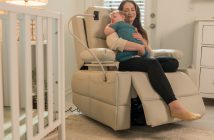Houston, Texas, is a lively city known for its rapid growth and new buildings. Recently, there has been a strong move towards sustainable building in response to the city’s hot and humid climate. Sustainable design in Houston is essential, helping homeowners save money and protect the environment. Both the construction industry and local residents are recognizing the importance of these practices.
This article explores how modern homes in Houston are adopting sustainable design. It looks at the use of energy-efficient appliances and solar panels, which are becoming common to reduce reliance on non-renewable energy. It also discusses the importance of high-efficiency HVAC systems and water-saving fixtures, which architectural design firm professionals are integrating to ensure comfort and conservation in Houston’s climate. We’ll also highlight the use of green building materials, showing how they help the environment and improve indoor air quality.
Energy-Efficient Appliances
Houston is a city that’s mindful of its environmental responsibilities, using energy-efficient appliances in modern homes shows its dedication to sustainability. Homeowners are increasingly choosing appliances with the Energy Star label, which use 10-50% less energy than standard models. This change not only reduces energy use but also saves a lot on utility bills.
By using less fossil fuel, residents help lower the city’s carbon footprint. These appliances, from refrigerators to washers, still perform well while operating more quietly and efficiently. This shift towards sustainability reflects a community-wide awareness of the need for environmental care in response to climate change. This blend of technology and eco-consciousness demonstrates how Houston’s modern homes lead in both innovation and sustainability. The city has also implemented incentive programs, encouraging more residents to make eco-friendly choices, further reinforcing this green transformation.
Solar Panels
Many Houston homeowners are installing solar panels. These panels capture and convert sunlight into electricity, reducing the need for traditional power sources. Not only do they provide clean energy, but they also act as a personal power station on your roof, significantly lowering electricity bills.
Over time, this eco-friendly solution pays for itself and helps the environment by cutting down on carbon emissions. Homeowners in Houston appreciate the financial savings and the peace of mind from contributing to a sustainable future. With growing environmental concerns, the community values these installations, which boost property values and support the global shift to renewable energy.
High-Efficiency HVAC Systems
With Houston’s hot and humid climate, high-efficiency HVAC systems are necessary for keeping homes comfortable and saving energy. These systems reduce energy use, which lowers cooling costs and lessens the environmental impact of homes. Their advanced technology ensures better air flow and consistent temperatures compared to older models.
While the initial cost is higher, the savings from lower utility bills make up for it over time. Using less energy also helps the environment and supports the city’s sustainability goals. Homeowners benefit financially and enjoy greater comfort during Houston’s intense summer months. Adopting high-efficiency HVAC systems is a smart and responsible choice for both comfort and environmental care.
Water-Efficient Fixtures
To tackle Houston’s water shortage, modern homes are now using water-efficient fixtures more often. These include low-flow toilets, faucets, and showerheads, which help save water and lower utility bills. For example, low-flow toilets use much less water per flush than traditional ones, conserving water and reducing sewage volume.
Water-efficient faucets and showerheads also lower water use without affecting performance. By using these fixtures, homeowners help address local water scarcity and save money in the long run. These fixtures often incorporate advanced technologies, such as aerators and pressure-compensating valves, to maintain water pressure while using less water. This move towards water-efficient technology is part of a larger push for sustainability in Houston, addressing environmental issues while meeting residents’ needs.
Green Building Materials
As the construction industry progresses, using sustainably sourced materials is becoming key for building modern homes in Houston. More attention is being given to materials like bamboo flooring, which grows quickly and has a lower environmental impact than traditional hardwoods. Recycled glass countertops are also popular, turning waste materials into durable and attractive surfaces.
Low-VOC paints are important for improving indoor air quality, as they avoid the harmful chemicals found in traditional paints. These choices help reduce a home’s carbon footprint and promote a healthier living environment. Selecting these materials shows a commitment to environmental responsibility, blending eco-friendliness with modern living needs.
Houston’s embrace of sustainable design is transforming the city’s housing scene, making eco-friendly living a priority. By integrating energy-efficient appliances, solar panels, high-efficiency HVAC systems, and water-saving fixtures, homeowners are significantly reducing their environmental impact and lowering utility costs. The adoption of green building materials like bamboo flooring and recycled glass countertops further shows the city’s commitment to sustainability. These efforts not only enhance the comfort and efficiency of homes but also contribute to broader environmental goals. As Houston continues to grow, sustainable practices are ensuring that its development is both responsible and forward-thinking.





If you’re a complete beginner, I suggest you start by removing decorations from the walls, including pictures, mirrors and shelves. You should also remove all outlet covers and switch plates. Store everything you remove from the walls in a safe place to protect them from damage. Next, clean off the old wallpaper. You will also need Roman wallpaper primer for further wallpaper adhesion.